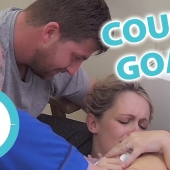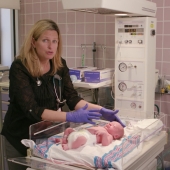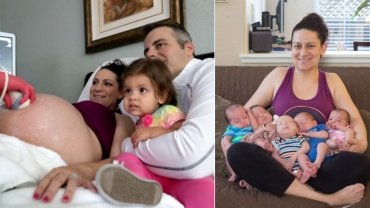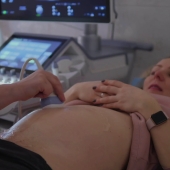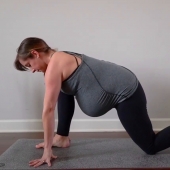Are you a patient – or a person? Sometimes during pregnancy, it’s hard to tell. We don’t really have the right concept for pregnancy: it is not a disease, but it is also not a state of health exactly. Between weeks 16 and 20, you’ll probably start to feel more like a patient because you’ll be offered another battery of tests.
What’s the difference between a screening test and a diagnostic test?
A screening tells you the chances that your baby has a disorder and a diagnostic test tells you whether they actually have it. Think “diagnosis.” Screening tests are generally based on blood samples from mom and ultrasounds of the baby.
Diagnostic tests require extracting cells from the placenta or fetus as in an amniocentesis or chorionic villus sampling (CVS). Most women are only offered screens during their pregnancy unless they are in a high-risk group and their doc recommends going straight to diagnostic tests.
The thing about screening tests is that they aren’t that accurate. They cast a wide net, and a “positive” result does not mean that your baby actually has something: it means they are at a higher risk of having a disorder than the general population. Likewise a “negative” result means that they are a lower risk, not that they don’t have it.
So what kind of screens are you in store for?
The two straight-forward screening tests are:
Quad screen: This measures the quantity of four substances in your blood to determine your baby’s risk of having a neural tube defect, Down’s syndrome, or other genetic condition.
Genetic carrier screens: Turns out genes are crazy, and you can be a carrier for a disease that you don’t have. Some ethnic groups have a higher risk of carrying certain genetic conditions, like Ashkenazi Jews are more likely to carry Tay-Sachs, African-Americans to carry sickle cell, and Caucasian Americans to carry cystic fibrosis. Because of this, the genetic carrier screen is often given based on your ethnicity. In late February 2017 the American College of Obstetricians and Gynecologists started recommending that all patients be offered some kind of carrier screen, but these guidelines have not been widely adopted. All this said, both parents have to be carriers for a child to be at risk, so your doctor may not even recommend these screens.
The most anticipated screening might not even strike you as a test. It’s the Level 2 full-body anatomy scan that happens around 20 weeks. It’s part of the second-trimester screens, but it’s also an amazing opportunity to look at your baby.
What do you have to do to get ready?
Basically nothing. Drinking some water beforehand can help them get a better look, but you can just show up. Prepare to spend some time, though. There’s a lot going on in there! The scan takes about 30 to 45 minutes if baby’s in a good position, or even longer if you have to wait for them to pose.
The ultrasound tech does a complete scan looking at baby’s body: the brain and spine, face, abdomen, limbs, and all four chambers of the heart. They are also measuring everything to make sure the baby is growing at the right pace for their gestational age. Lastly, the scan will also look at your uterus and placenta and measure your amniotic fluid to make sure all’s well with mom, too.
If you’re curious, you can learn the baby’s gender now. (If you want to keep it a secret, definitely tell your tech or they will start calling the baby he or she.) Also, you don’t have to have to have any of these screens. Some families opt out. Others want to know everything so they can be as prepared as possible. There is no right or wrong answer.
- 1655 views

